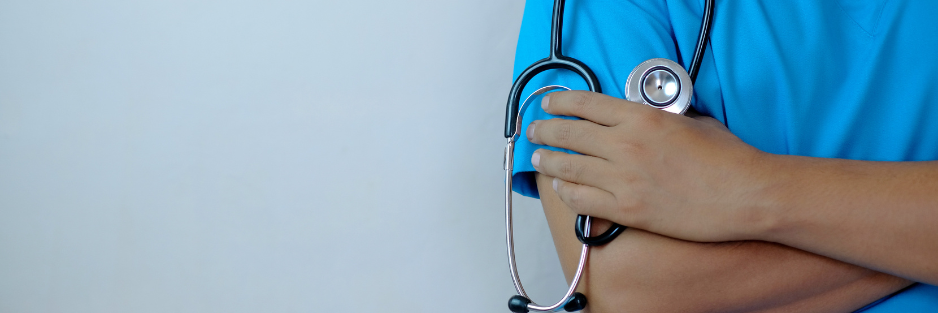
Stethoscopes are essential tools for healthcare professionals, enabling them to assess and diagnose patients effectively. However, if not cleaned properly, they can also be a source of cross-contamination. Ensuring proper hygiene practices for stethoscopes is crucial in maintaining patient safety and preventing the spread of infections.
Why Cleaning Your Stethoscope is Essential
Stethoscopes come into direct contact with patient’s skin and can accumulate bacteria and other pathogens during routine use. [1]Studies have found that stethoscopes harbour harmful microorganisms and require cleaning between patient consultations to reduce the spread of hospital-associated infections. Cleaning your stethoscope daily is essential to mitigate these risks and uphold infection control standards in healthcare settings.
Recommended Cleaning Practices

- Before and After Each Patient Interaction
- Use Alcohol Wipes: After each patient examination, use a 70% isopropyl alcohol wipe or a disinfectant wipe to clean the diaphragm, bell, and earpieces. Make sure to let it air dry to ensure maximum efficacy.
- Wipe Down the Tubing: Don’t forget to clean the tubing, as it can also transfer pathogens. Use the same wipes to ensure all surfaces are disinfected.
- Daily Deep Cleaning
- Soapy Water Solution: Perform a more thorough cleaning at the end of each day. Use a solution of warm water and mild soap. Wipe the chest piece and tubing, then rinse with a damp cloth to remove any soap residue.
- Disinfectant Solutions: If required, use a hospital-grade disinfectant that is safe for medical equipment. Always check the manufacturer’s guidelines before applying any disinfectant to avoid damage.
- Storage Practices
- Avoid Hanging: Do not hang your stethoscope around your neck when not in use, as this can transfer contaminants from clothing. Instead, store it in a clean, dry place.
- Use a Stethoscope Case: When not in use, consider using a protective case to keep your stethoscope clean and free from dust and other contaminants.
Best Practices for Healthcare Professionals
- Educate and Train Staff
Ensure that all healthcare staff are trained on the importance of stethoscope hygiene. Regular training sessions and reminders can reinforce the importance of cleaning protocols.
- Create a Cleaning Schedule
Establish a routine cleaning schedule for all stethoscopes used in the facility. Regular audits can help ensure compliance with hygiene practices.
- Use Personal Stethoscopes
Encourage healthcare professionals to use personal stethoscopes instead of sharing them where possible. This reduces the risk of cross-contamination between patients.
- Implement Visual Reminders
Place visual reminders near workstations to encourage healthcare providers to clean their stethoscopes after each use. Simple posters or stickers can serve as effective prompts.
Maintaining the hygiene of stethoscopes is a vital aspect of infection control in healthcare settings. By adhering to proper cleaning practices and fostering a culture of awareness among healthcare professionals, we can significantly reduce the risk of cross-contamination. A clean stethoscope protects patients and enhances the overall quality of care provided. Prioritising stethoscope hygiene is a simple yet powerful step in safeguarding patient health and ensuring a safer healthcare environment.
[1] Kalra. S et al., 2021, Stethoscope hygiene: A call to action, Infection Control Epidemiology, https://pubmed.ncbi.nlm.nih.gov/34009112/
